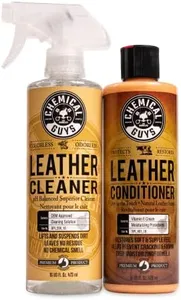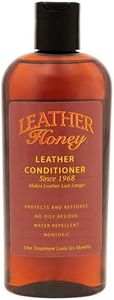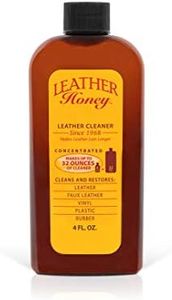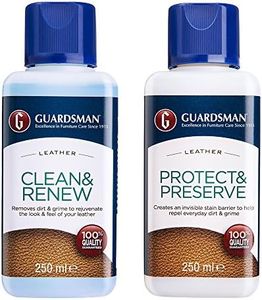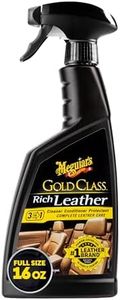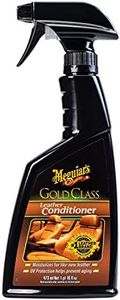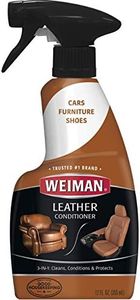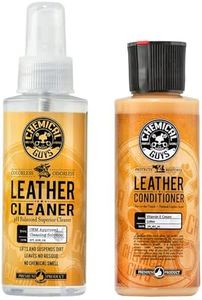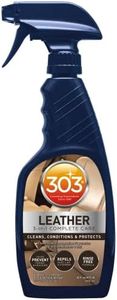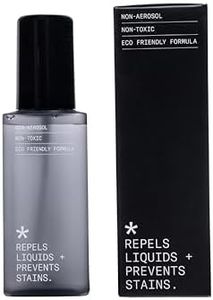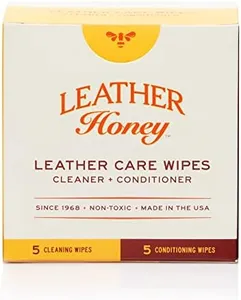We Use CookiesWe use cookies to enhance the security, performance,
functionality and for analytical and promotional activities. By continuing to browse this site you
are agreeing to our privacy policy
10 Best Leather Protectors
From leading brands and best sellers available on the web.Buying Guide for the Best Leather Protectors
When choosing leather protectors, it's important to find a product that will best suit the type of leather you own and the purpose you need it for. Leather protectors help preserve the material, prevent stains, and extend the life of your leather goods, be they shoes, bags, furniture, or clothing. The right protector adds an invisible barrier, helping you maintain the look and feel of your leather items while shielding them from daily wear and tear. Start by understanding the kind of leather you want to protect and how often the item is exposed to moisture, dirt, or friction; this will guide you in making the best choice.Type of Leather CompatibilityNot all protectors are suitable for every kind of leather. Leather comes in many types, such as smooth, suede, nubuck, or full-grain, each with its own characteristics. A protector made for smooth leather may darken or damage suede or nubuck. Always check that the product specifically lists compatibility with your leather type. If you have various leather items, choosing a multipurpose protector may be worthwhile, but for delicate or expensive pieces, a more specialized option is often safer.
Application MethodLeather protectors are available as sprays, creams, or wipes. Sprays offer quick, even coverage and are great if you need to treat larger surfaces, like jackets or sofas. Creams generally provide a deeper nourishing effect and are a good option for older or drier leathers, but they take more effort to apply evenly. Wipes are convenient for quick touch-ups or travel, though they may not give as thorough protection on larger items. Consider your own comfort with application and the size of the item you're treating when picking a method.
Water and Stain ProtectionOne of the main reasons to use a protector is to guard against water and stains. Some protectors offer basic splash resistance, while others claim waterproofing or advanced stain repellent properties. If the item will see light, everyday use indoors, basic protection should suffice. For outdoor items or gear at risk of heavy spills, mud, or rain, a higher level of repellency is important. Think about where and how you use your leather goods to decide on the necessary level of protection.
BreathabilityQuality leather needs to breathe to stay supple and avoid damage. Some protectors form a flexible, breathable barrier, while others may clog the pores of the leather and cause it to dry out over time. Always check that the product mentions breathability, especially for jackets, shoes, or items worn directly on the body. If you live in a humid area or use the leather often, breathability is essential in keeping your items comfortable and well-preserved.
Residue and Finish AlterationA good protector should not leave a sticky, greasy, or shiny residue on your leather. Some products might change the texture or slightly darken the color. If you want to preserve the natural look, pick a protector that promises a clear, invisible finish with no alteration in color or texture. For vintage leathers or patinas, test the product on a hidden area first to ensure you like the result. Your desire for maintaining appearance should guide you here.
Frequency of ReapplicationDifferent protectors last for various periods before needing reapplication, ranging from a few weeks to several months. High-wear items may require more frequent treatments. If you prefer low maintenance, look for long-lasting protectors, but if you don’t mind regular care, frequency may not be a major concern. Consider how often you use the item and how easily you can reapply the product when choosing.
